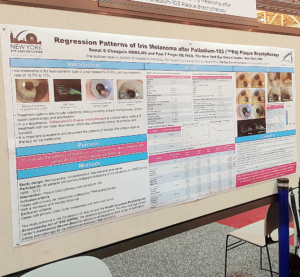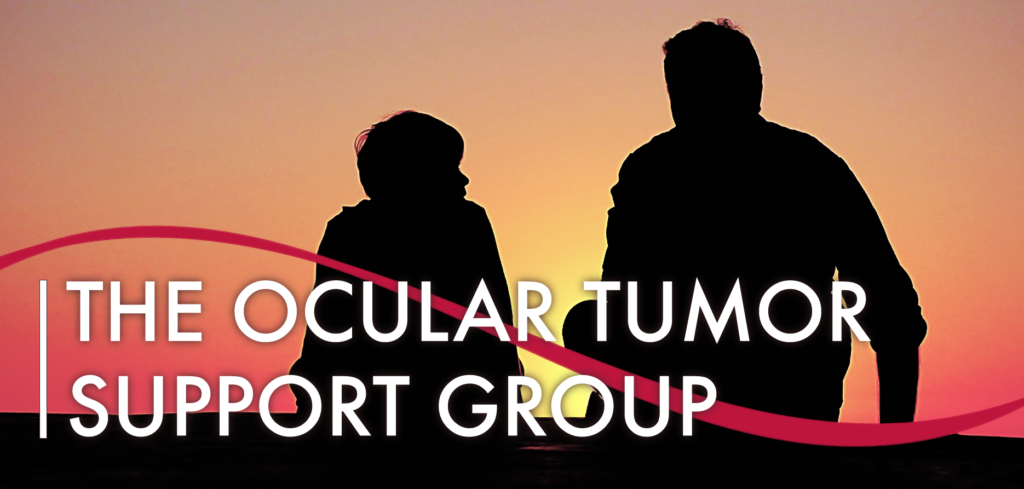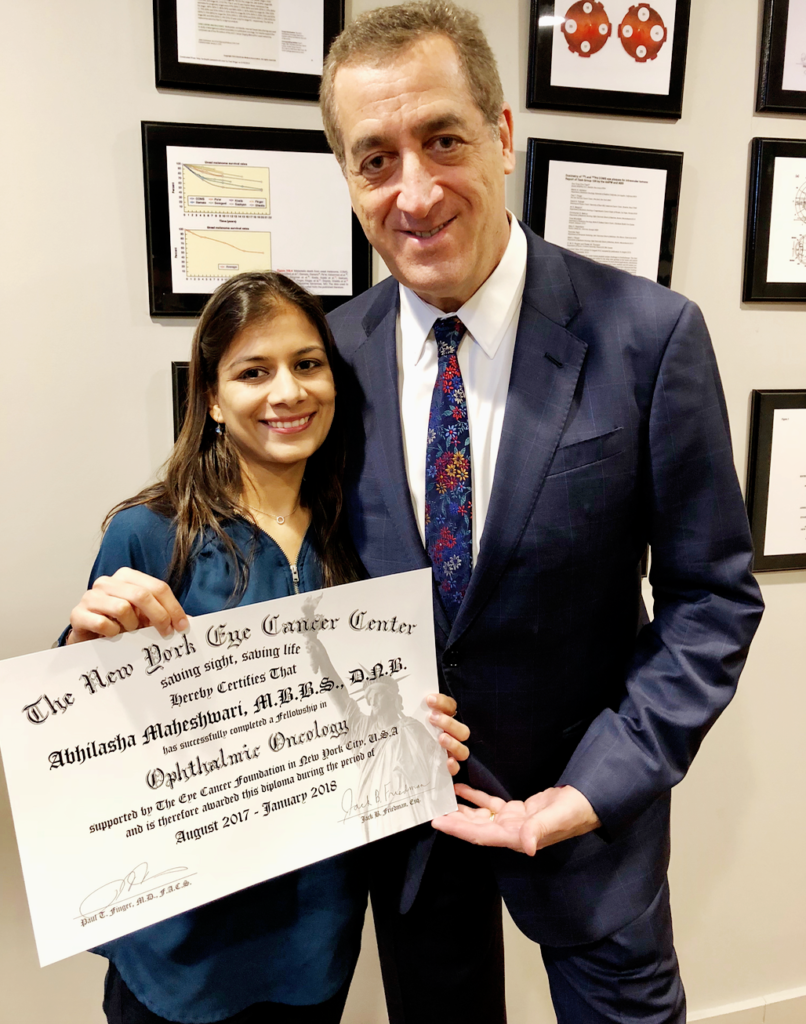Trailblazing Eye Cancer Studies Presented at AAO 2017
As you may have heard in our previous blog, the American Academy of Ophthalmology (AAO) 2017 Meeting in New Orleans, Louisiana was attended by noteworthy fellowship alumni from the Eye Cancer Foundation, as well as founder and executive director of the ECF, Dr. Paul T. Finger. Held from November 11th to 14th, AAO took place the day following the 2017 AAOOP Annual Meeting, where oral presentations were given by ECF Fellows Dr. Sonal Chaugule and Dr. Abhilasha Maheshwari.
Dr. Chagule spoke on her research regarding the efficiency of intravitreal steroids to treat radiation side-effects, while Dr. Maheshwari spoke on a 12-year study of patients treated with slotted plaque radiation therapy. To read more on AOOP 2017 presentations from these ECF fellows, click here.

At AAO 2017, hosted at the Ernest N. Morial Convention Center in New Orleans, Dr. Sonal Chaugule, Dr. Ekatrina Semenova, and Dr. Nicole Scripsema presented ECF-sponsored research conducted under the guidance of Dr. Paul T. Finger at the New York Eye Cancer Center and at New York Eye and Ear Infirmary.
Dr. Sonal, pictured below along Dr. Finger, presented two studies, the first titled “Regression patterns of Iris Melanoma after Palladium-103 Plaque Brachytherapy”. This study takes into account 50 iris melanoma patients who were closely evaluated following plaque brachytherapy with Palladium-103 as treatment. The results of this study underscored Palladium-103 as effective treatment for iris melanoma. After incisive evaluation, patients showed decreases in tumor size, tumor pigmentation, and more. These findings are particularly important to iris melanoma patients, who endure a rare condition in the already-rare family of cancers (iris melanoma patients are only 2-3% of eye cancer cases). To read more on this paper and its implications, click here.

Dr. Chaugule’s second presentation concerned her paper most-recently published in the Indian Journal of Opthalmology. Titled “Primary Topical Chemotherapy for Giant Ocular Surface Squamous Neoplasia”, this paper examines and reports the outcomes of using topical chemotherapy eye drops (such as 5-Flurouracil and/or Interferon alpha-2b) to treat giant ocular surface squamous neoplasia. The paper was featured in a past blog post — to read more on the study, which evaluated 10 patients with stage T3 tumors, click here.
Details from AAO do not stop here! Stay tuned for more exciting news on the work ECF Fellows make towards eye cancer research by keeping eyecancer.com in your bookmarks!














